Table of Contents
What is Glycolysis?
Glycolysis is the splitting or lysis of a molecule of glucose in the cell’s cytoplasm. It is the first stage of cellular respiration. It involves a series of reactions and specialized enzymes to produce two molecules of pyruvate, which is crucial for the next step of cellular respiration that occurs in the matrix of the mitochondria.
Before we begin, I must clarify a couple of important concepts.
–Oxidation: Refers to the removal of one hydrogen ion (H+) or the removal of one electron
–Reduction: Refers to the addition of one hydrogen ion (H+) or the removal of one electron
–Substrate-level phosphorylation: It’s a metabolic process that occurs when a phosphate group is transferred from a phosphorylated intermediate to an ADP molecule, forming ATP.
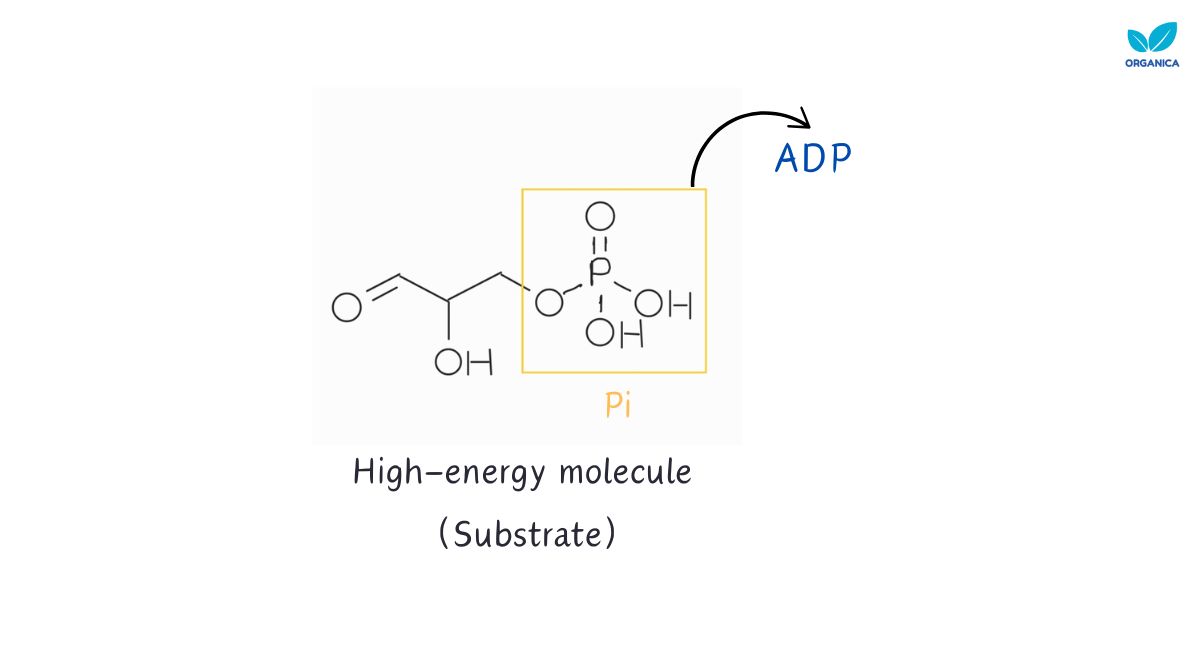
The 10 steps of Glycolysis:
In glycolysis, a 6-carbon glucose is split into two 3-carbon pyruvate molecules.
From steps 1 to 5 of Glycolysis, ATP will be consumed. This is called the energy-consuming phase.
Step 1:
Once glucose enters the cytoplasm of the cell, the enzyme “Hexokinase” catalyses the transfer of a phosphate group from an ATP molecule to the glucose molecule, forming glucose 6-phosphate.
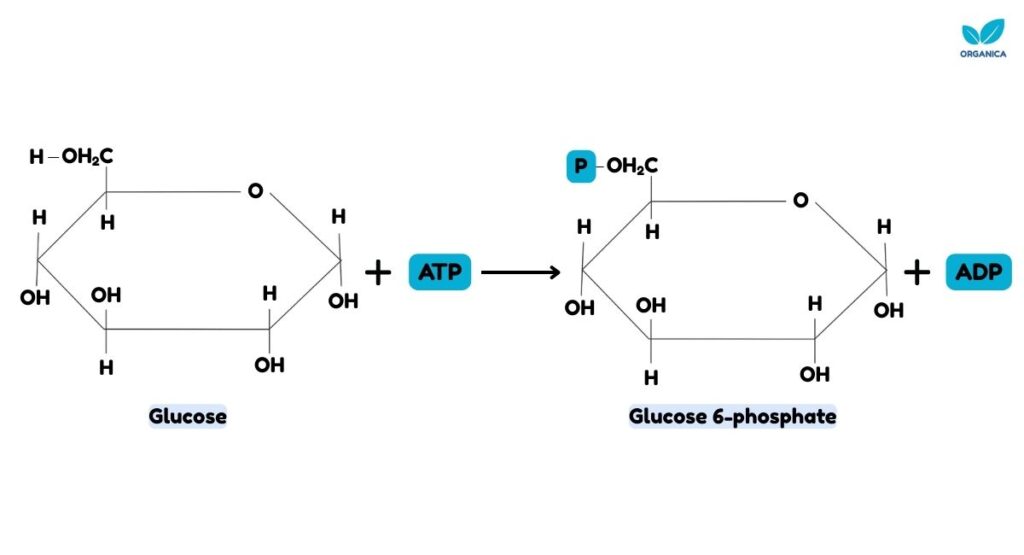
Step 2:
An isomerisation reaction occurs, in which the carboxyl oxygen (C=O) is moved from carbon 1 to 2 to produce fructose 6-phosphate. This reaction is facilitated by the enzyme “phosphoglucose isomerase”.
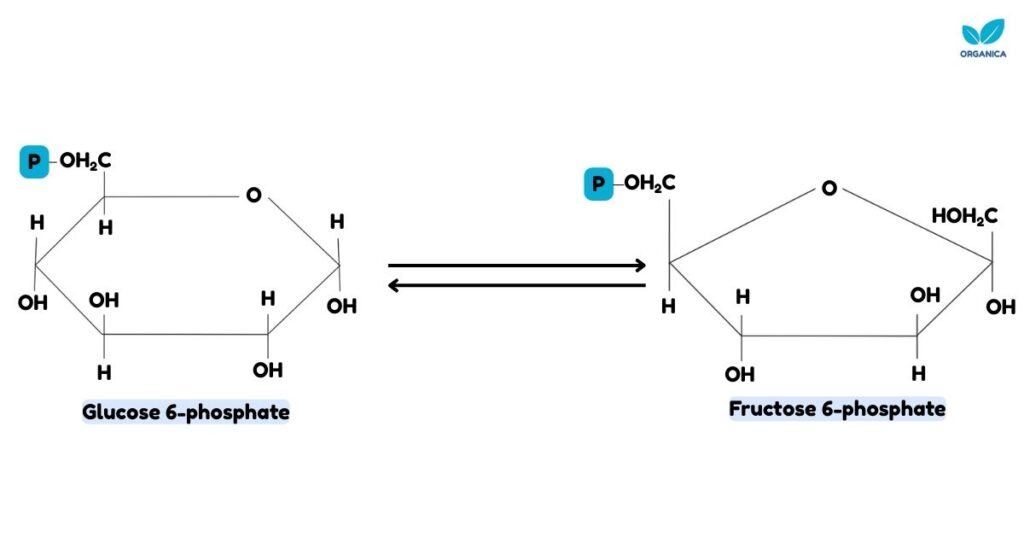
Step 3:
Another substrate-level phosphorylation process takes place. A phosphate group is transferred from ATP to the fructose 6-phosphate, catalysed by the “phosphofructokinase” enzyme, forming fructose 1,6 bisphosphate.

Step 4:
The unstable fructose 1,6-bisphosphate is split by the enzyme “aldose”. This forms glyceraldehyde 3-phosphate and Dihydroxyacetone phosphate. Only glyceraldehyde 3-phosphate can continue through the next steps of Glycolysis. What happens to the other molecule?
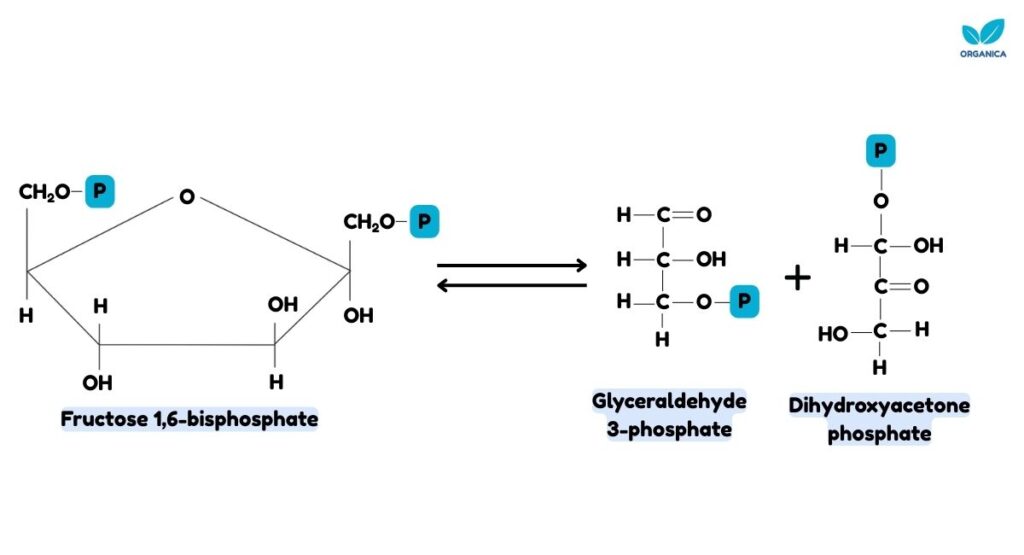
Step 5:
“Triose phosphate isomerase” enzyme transforms Dihydroxyacetone phosphate into Glyceraldehyde 3-phosphate.

Keep in mind that we have two molecules of Glyceraldehyde 3-phosphate, so the steps from 1-6 will occur twice. This is also the phase in which ATP will be produced. This is the energy releasing phase.
Step 6:
Glyceraldehyde 3-phosphate is dehydrogenated. It donates a hydrogen and two electrons to an NAD+ molecule, forming NADH or reduced NAD. Glyceraldehyde 3-phosphate also picks up a phosphate group using the enzyme “glyceraldehyde 3-phosphate dehydrogenase”, ultimately forming 1,3 -bisphosphoglycerate.
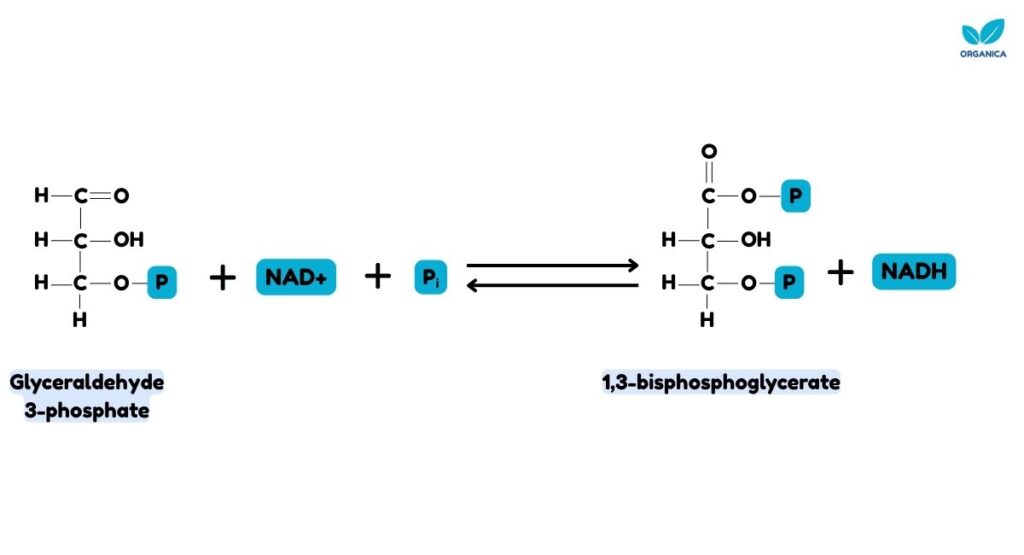
NAD is a coenzyme involved in cellular respiration. It stands for Nicotinamide Adenine Dinucleotide. It carries hydrogen ions and electrons to the electron transport chain, the final stage of cellular respiration.
Step 7:
1,3-bisphosphoglycerate transfers a phosphate group to ADP to form ATP, which is catalysed by the enzyme “Phosphoglycerate kinase”. This is the first example of substrate-level phosphorylation.
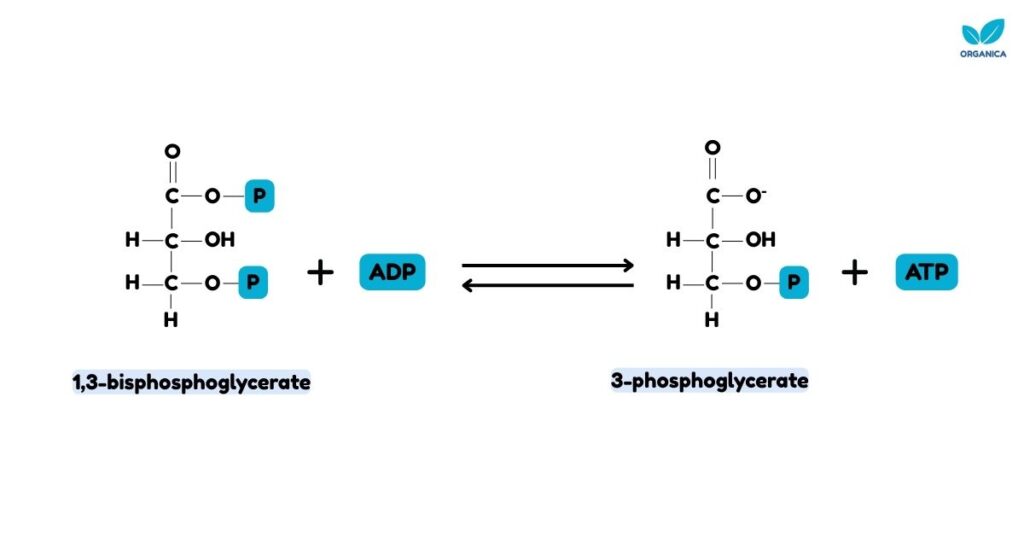
Step 8:
Another isomerisation reaction occurs, which is facilitated by the “phosphoglycerate mutase” enzyme, forming 2-phosphoglycerate.
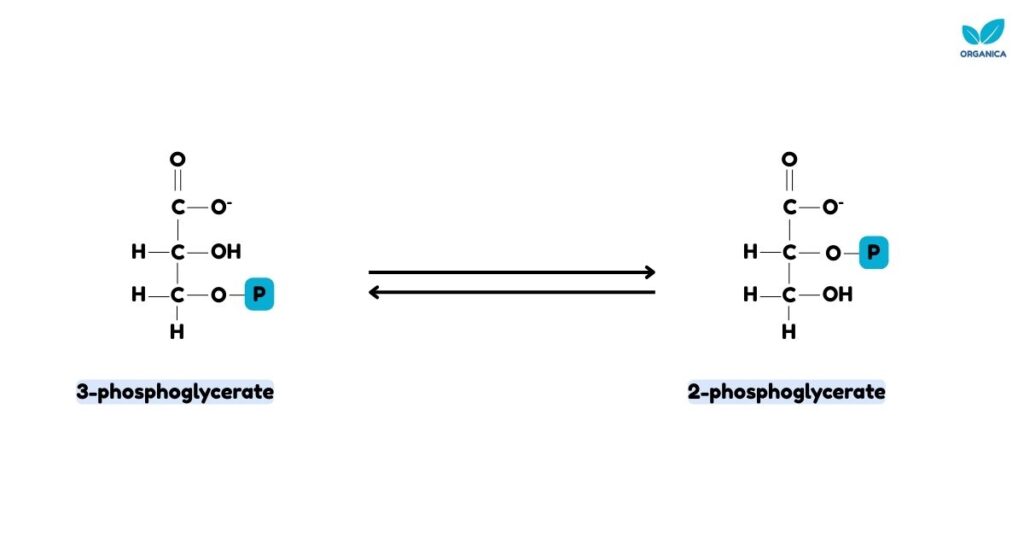
Step 9:
In this step, a water molecule is removed from 2-phosphoglycerate, forming phosphoenolpyruvate using the enzyme “Phosphoglycerate mutase”.
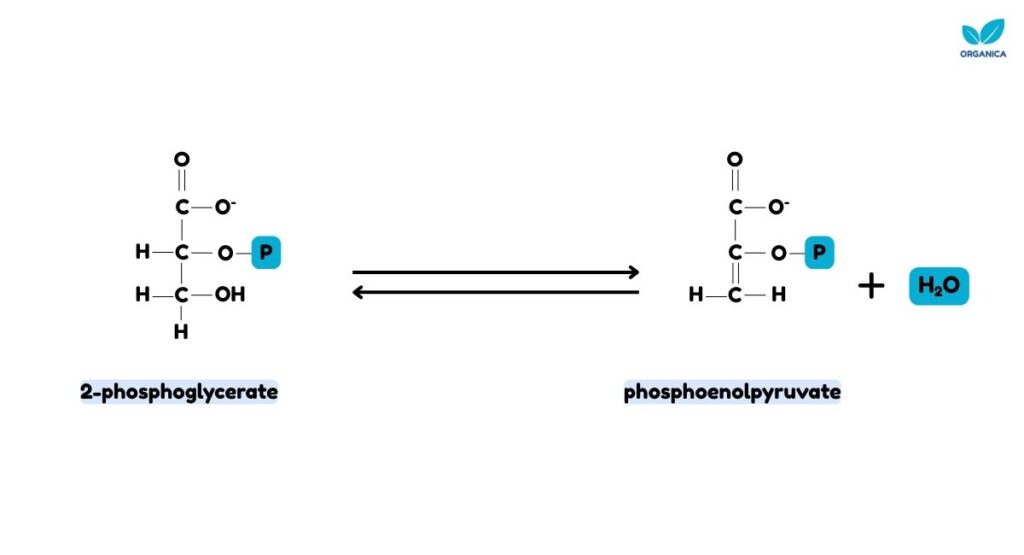
Step 10:
This is the final step in Glycolysis. Phosphoenolpyruvate transfers its high-energy phosphate group to ADP, forming ATP. This is another example of substrate-level phosphorylation. The final result of Glycolysis is pyruvate.
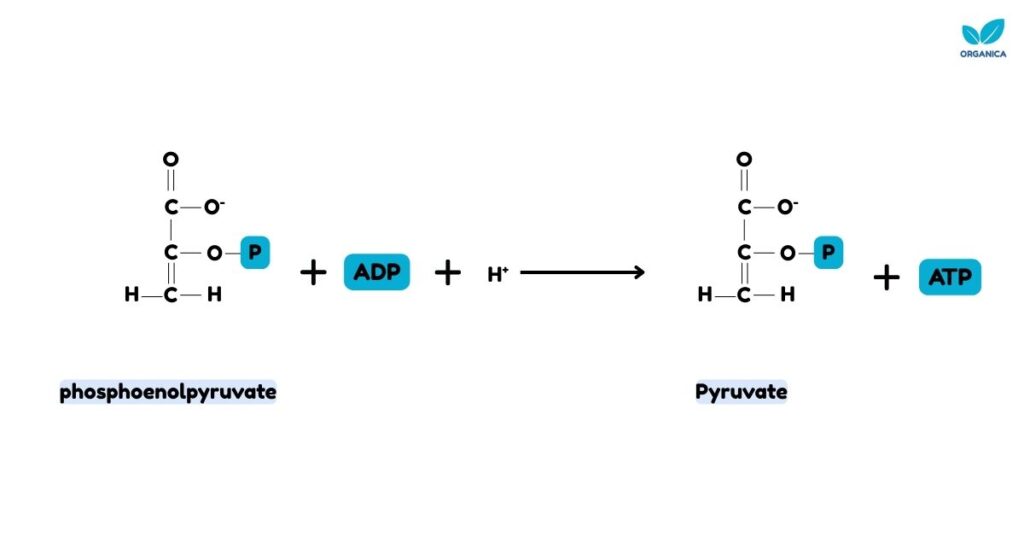
The final products of Glycolysis:
Since the steps from 6-10 occur twice, we make twice the number of each product.
| Pyruvate | 1 x 2 = 2 molecules |
| NADH | 1 x 2 = 2 molecules |
| ATP | 2 x 2 = 4 molecules. But since we consumed two ATPs in the beginning, the net gain is 2. |
The fate of Pyruvate:
The fate of pyruvate depends on the presence of oxygen. If oxygen is present, pyruvate will enter the mitochondria and become acetyl-CoA. If oxygen is absent in animals, pyruvate stays in the cytoplasm and eventually turns into lactic acid. This is why we feel sore after an intense exercise.